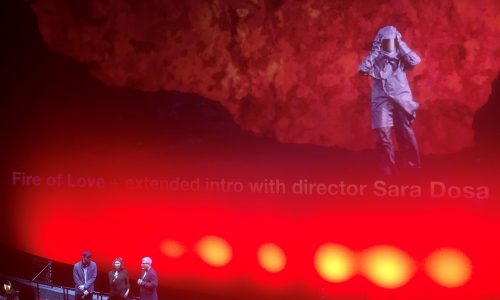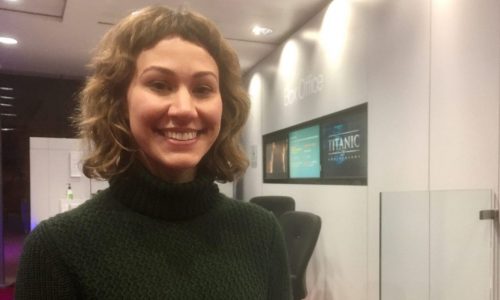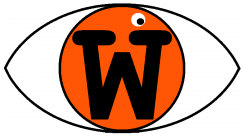As Sara Dosa waxes lyrical about her newfound passion for volcanoes, after an Awards-Season screening at the BFI IMAX in London, she sounds as much of an expert as the contributors – or as she prefers to call them, the participants – in her most recent film. After living for months with their material, documentary film-makers become so immersed in their subject that to all but the most learned academics in their area, they appear to be world-renowned experts in their field.

In the case of her BAFTA and Oscar-nominated documentary, Fire of Love, her participants are the late Katia and Maurice Krafft, a French married couple who travelled the world in the 1970s and 80s, studying and chronicling active volcanoes. Their passion for volcanoes is matched only by Dosa’s own – learned from them.
Dosa first came across the Kraffts and their work during production of her previous film, The Seer and the Unseen, which followed an Icelandic woman, who was in communication with the spirits of nature. With Iceland being a volcanic island, she wanted to open that film with archival images of volcanic eruptions and her research took her to films and photos, shot by Maurice and Katia. “Their images were undeniably spectacular right away,” she recalls. “There was something special about them. But once we learned that they were a couple, in love with each other and the Earth, we realised there was a really interesting film here.”
Dosa and her team – including producer Shane Boris, who is up against himself with a second Oscar nomination for Navalny – found about 250 hours of footage to explore to decide what story to tell. “Going through the vast legacy, the thing that kept coming into focus was love,” she realised. She found a line in one of Maurice’s books which solidified her conclusion. “For me, Katia and volcanoes – it is a love story.”
Dosa says the thing that could most truly articulate Katia and Maurice’s love for each other – and the Earth – was their own images of erupting volcanoes. “There’s nothing, in my opinion, more grandiose, more forceful, more dreamy, more beguiling, more magical, more baffling than volcanoes – and I could use all of those adjectives to describe the feeling of falling in love as well,” she explains. “So we used volcano imagery as Katia and Maurice’s own love language, so to speak, and mapping the story of their relationship onto the chronology of exploring erupting volcanoes and getting closer to the unknown of the science of our planet.”
The love story is told entirely through archive footage – both their own and TV appearances – and viewers are guided through the narrative by a script, written by Dosa and Boris, and read by the actress and director Miranda July; and almost the first thing they tell us is that the couple would be killed, doing what they loved, studying a volcano. Dosa says there were several reasons why she wanted to warn audiences from the start about the fate of her protagonists.
“We wanted to be sensitive to the fact that these were two human lives – if we held out until the end, it would feel like an exploitative plot reveal. Second, we were worried about people being distracted, guessing when they would die – it would take up narrative space and we wanted, instead, for the film to focus on how they lived, rather than when they would die. The third reason was the them of time, which is prominent in the film. It was essential for us to impress this idea that they were humans – fleeting, precarious human lives who were in love with the seemingly eternal force that are volcanoes. So by setting a human clock, with the idea that we are living in the span of their final day, that can pull into focus what feels most meaningful for them, how they’re rationing their every hour – being with each other – and being with volcanoes.”

For many directors, the final, exhibition stage of their film can be almost fleeting, by comparison with the planning of pre-production or the craft of the shoot or post-production – a film is released, spends a few weeks in the cinemas and then disappears until it makes a brief run on a streaming service somewhere. But more than a year after Fire of Love had its World Premier at the 2022 Sundance Film Festival, it’s still making waves in cinemas as it continues to do the rounds, to promote its awards run. “I’m really grateful for the awards race, but I never imagined I’d be any part of an awards race,” explains Dosa. “My team and I have tended to make idiosyncratic films about idiosyncratic people. It wasn’t a consideration that I’d be part of an awards conversation, ever. It’s been surreal, quite honestly.” She says that for her, the extra recognition given to her film at this stage in its life is an opportunity to honour everyone else involved in the project. “I think what grounds me most and what feels most meaningful is when I think about my collaborators and the fact that this was such a labour of love – and also Katia and Maurice – who feel like collaborators, even though I never got to know them in real life. I feel like I know them deeply, but never got to meet them, since they passed away thirty years before I came to the material. And I keep thinking of what this might mean for them – they used to tour the world, showing their images to people and engaging in conversations, hearing people so inspired by their imagery or by their adventurism and the fact that now, almost thirty two years since their passing, people are meeting their work again. To me, that feels so exciting that my team and I can continue the legacy that they began through their courage and through their love.”
Despite the astonishing, frightening and evocative footage provided by Katia and Maurice Krafft, showing how close they were prepared to get to danger to teach the world about their man passion, besides each other, audiences can’t help but notice that for every shot of the two of them, teetering on the brink of a crater together, someone else must be there filming them. Dosa has nothing but praise for those who have usually gone unrecognised. “They were supported by a tremendous network of friends, guides, other cinematographers, porters, family members,” she enthuses. “We think of it as a love triangle, between two humans and volcanoes – but there were so many more people. These people, who were there with them during these profound and devastating, but also transcendent and beautiful moments.”
Perhaps the strangest thing about her craft is that having become such an expert in volcanoes herself, Dosa will now have the chance to study and pass on her newfound knowledge about something else. “That’s my favourite part of documentary film-making – getting to dive deeply into these different worlds. In a similar way to Katia and Maurice – the more they tried to understand volcanoes, the more they realised they could never know. I feel that way about making documentaries. Each film is like an opportunity to learn and go deep – and then I find myself yearning for so much more. And then the project is over. They’re like these little marvels – these worlds that I get to step into and dwell inside – and the relationships, whether it’s with my team-mates or the people in the film, are by far the most important – and those carry on even after a project is over. It’s sad in this case that I didn’t get to know Katia and Maurice themselves but I got to know Maurice’s older brother Bertrand and his wife quite well and they’ve been amazing on this journey. But the participants in my previous films still feel like family. It has been fun. I feel like I have a strange amount of knowledge about Icelandic elves, mushroom hunting in the Oregon woods and now about volcanoes, so it’s a funny collection.
